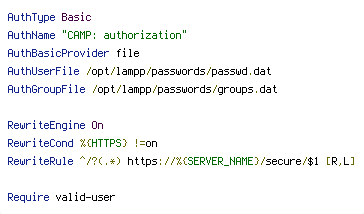


A common mistake is to have a mismatch between the “realm” when creating the user file with htdigest and the “AuthName” in the Apache config file. If you encounter login problems, check the Apache error log. Restart apache and verify your configuration. Configure Virtual Hostįinally, we add the necessary directives to the virtual host configuration, inside the directory section to be more precisely. allow,deny Allow from all AuthType Digest AuthName Nagios Access AuthDigestFile. On other systems, you might have to compile Apache with the –enable-mod-digest flag. Consider using a more secure method of authentication such as Digest. Installing mod_auth_digest on Ubuntu is as easy as calling: # sudo a2enmod auth_digest The settings in the following example code snippet enable an outbound connection policy for HTTP digest authentication. # sudo htdigest -c /path/to/user/file realm username Install Module mod_auth_digest The flag -c creates a new file, it overrides the existing one if exists. The application takes the file name, realm and username as arguments, then prompts twice for the user’s password. Create Account fileįor digest authentication we need to use a utility called htdigest, unlike with basic authentication where we used htpasswd. Authentication: Digest AuthName Subversion repository AuthType Digest. Here are the steps to create a password file to store all account information, install the apache module mod_auth_digest and the necessary configuration parameters to enable security of our restricted area. The example from the section called Digest authentication allows only clients. That is where Apache Digest Authentication takes over and provides us with MD5 encrypted values, using the mod_digest Apache module.

Basic http authentication in Apache (mod_auith) has been available for a while, but one major downside still exists, which is the exchange of plain text user name and password information over a possibly unsecured network.


 0 kommentar(er)
0 kommentar(er)
